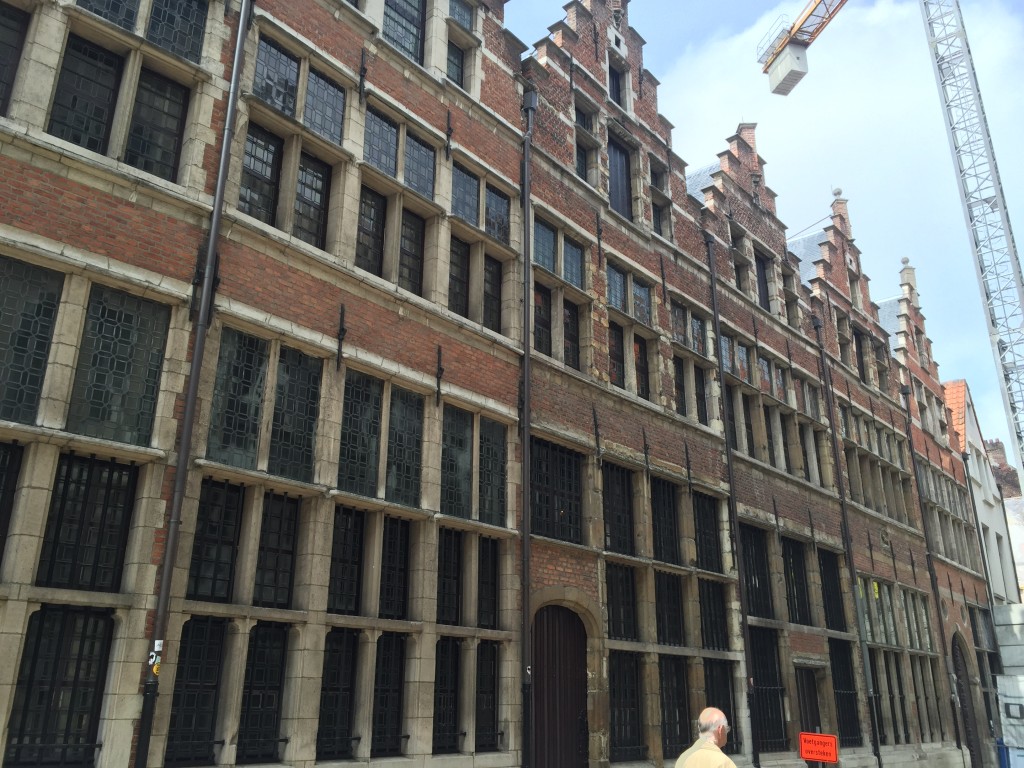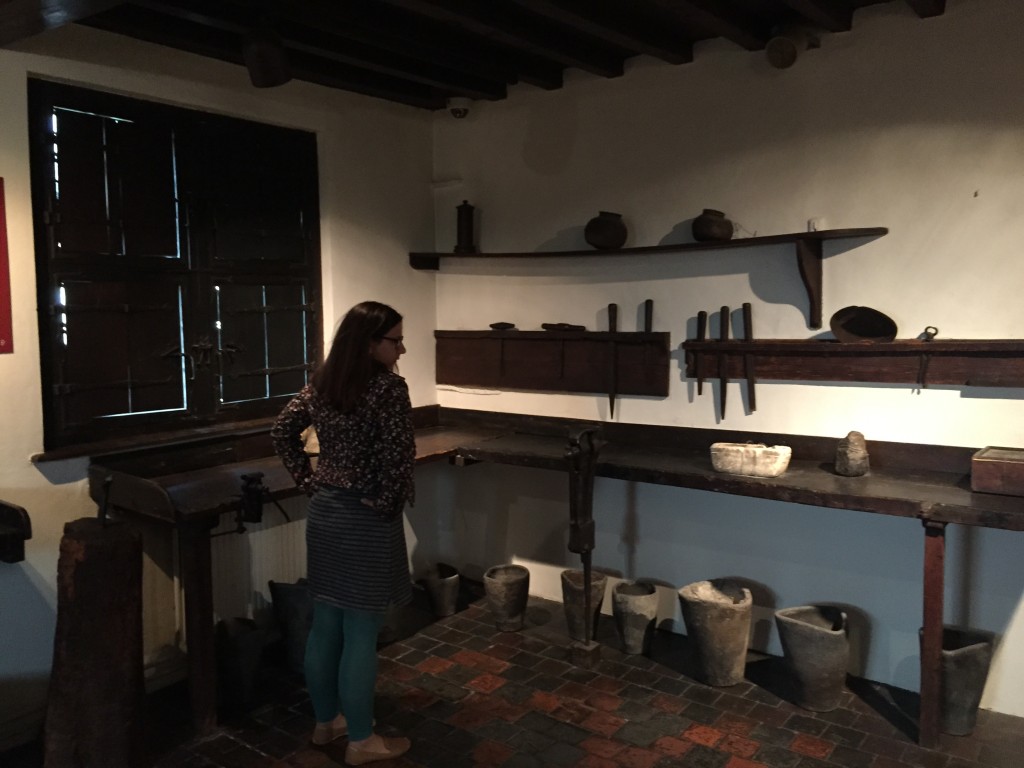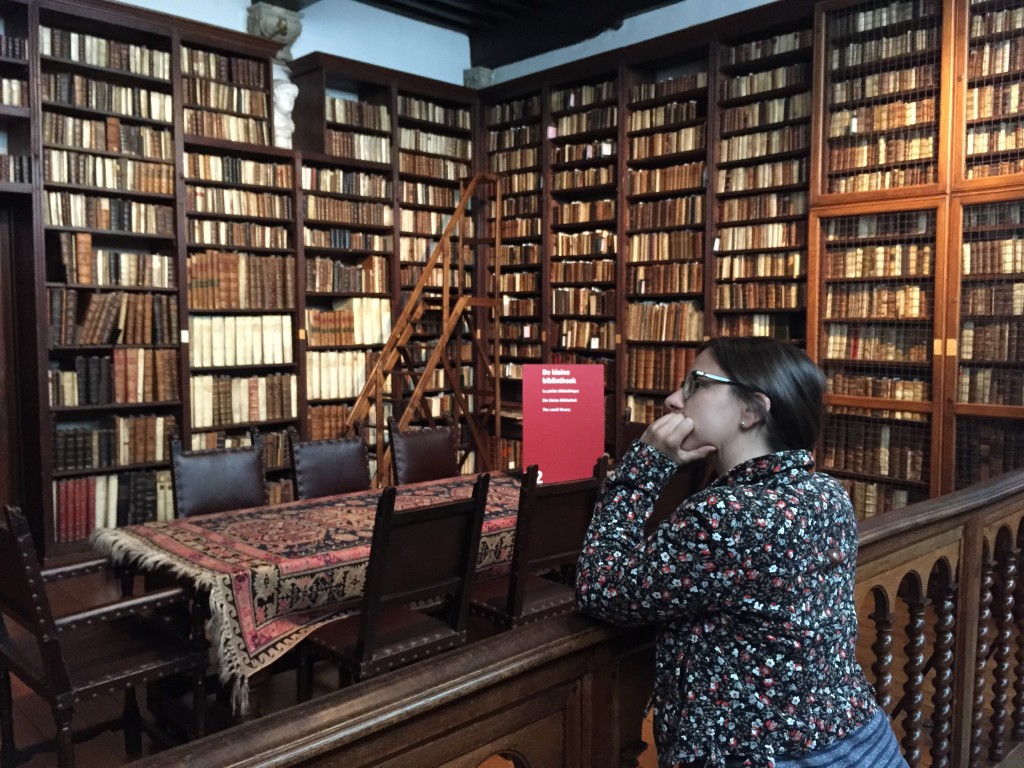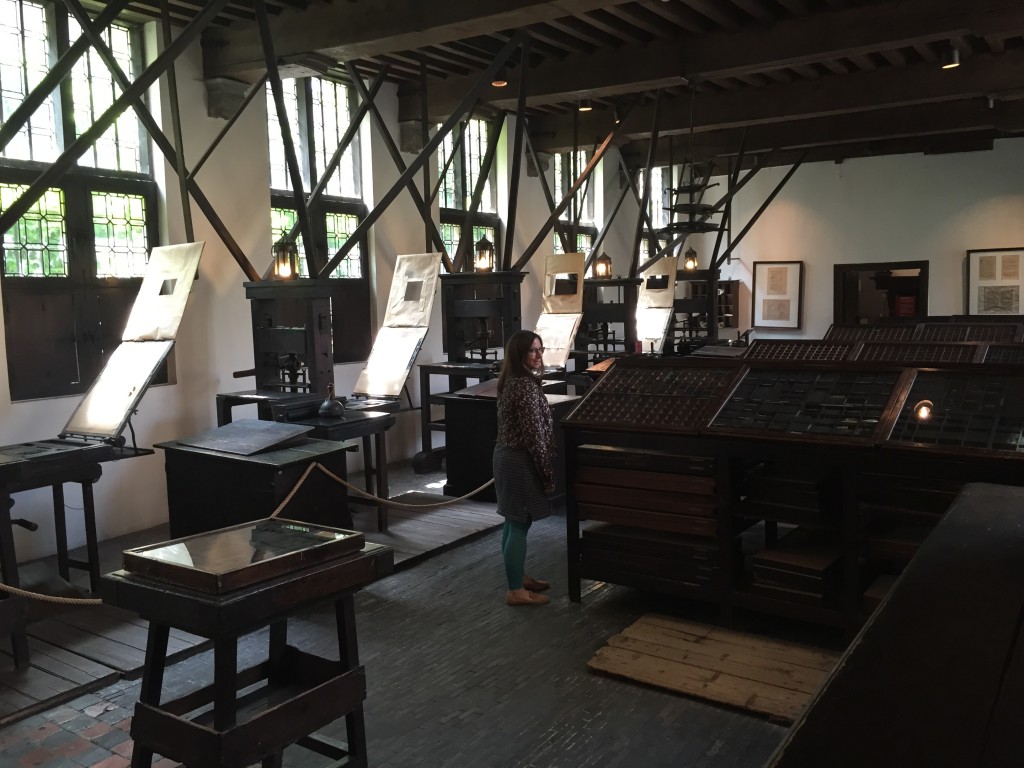As Tyler and I made our way inside Museum Plantin-Moretus in Antwerp, Belgium, this past June, we knew that its stature as a UNESCO World Heritage site meant we would, at the very least, feel like we had an afternoon well-spent.

In my experience, the UNESCO people tend to make good choices. Indeed, it’s not every day you get to tour a complex of buildings where craftsmen, thinkers, and family worked and lived from the sixteenth century through the mid-nineteenth century. (According to the UNESCO nomination, there would have been about 140 other individuals and/or businesses in Antwerp’s print trades in the mid-sixteenth century.) Christopher Plantin served as the House’s “master” from 1555-1589, and his son-in-law Jan I Moretus served as master from 1589-1610. See the UNESCO nomination for more on the other Plantin House masters. Shortly after the firm printed its last book in 1866, the site became a museum. Visitors have been enchanted by it ever since, and you don’t have to have completed a PhD exam field in print culture and history of the book to appreciate this museum’s ability to transport visitors to another time and place.
Plantin-Moretus has a lot going for it, including very comprehensive business archives and galleries. (Unfortunately, we were too exhausted by the end of the workshop-house tour to enjoy the galleries properly.) It’s difficult to summarize why I liked the museum so much–why, at the expense of sounding a bit dramatic, I feel like I left my soul there. First, the Museum retains a workshop full of the family’s printing presses (including the two oldest extant in the world), type, and other tools.

It also boasts the multi-room library of several generations of humanists (a fancy term for people interested in natural rather than supernatural concerns and whose intellectual interests spanned multiple disciplines).

These material survivals virtually tell the story of the site and the people who lived and worked there themselves. Perhaps I feel so taken with the place because I really felt the presence of the people who had used the objects and spaces there. Sure, the things I want to see more of in house museums and workspace period rooms–like dirt and disorder–weren’t there. But it’s hard not to imagine a journeyman moving about the print shop managing apprentices when just about all the tools he used (including sunlight streaming through the tall windows) are staring you in the face.

The Museum offers a great audio tour too that provides visitors with succinct discussions that enhance rather than detract from the already dense sensory experience. I particularly enjoyed going into some detail about the gilt leather wallpaper (much of it reproduced since gilt leather is difficult to preserve) this prosperous family installed throughout the workshop-house, a luxury that was a speciality of craftsmen in nearby Mechelen. The audio guide really made you take a close look.
And yet the interpretation of only one bedchamber and what seems to be a reproduced kitchen (a room that, according to the guidebook, was a wash house in Plantin’s lifetime) spurred questions about domestic life and work at the site. My curiosity was only heightened when I read in the visitor guide that two of Plantin’s daughters (Margaretha and Martina) married their father’s “most important assistants,” thereby cementing their importance as consorts and also business partners. That says a lot about how permeable the walls and doors here really were.
Perhaps I feel like I left my soul there since past inhabitants most certainly left theirs there too.
Further Reading
If you want to take a circa 1900 virtual tour of Museum Plantin-Moretus, check out this visitor guide on the Internet Archive.
And of course, nothing can compare to visiting the site in person. I recommend it (and Belgium more generally) very highly. Learn more here the Museum Plantin-Moretus website.
I’ve written about workshop period rooms in the past. Check out my blog post about cleaning, inventorying, and cataloguing a duck decoy shop period room at the Upper Bay Museum in North East, Maryland.